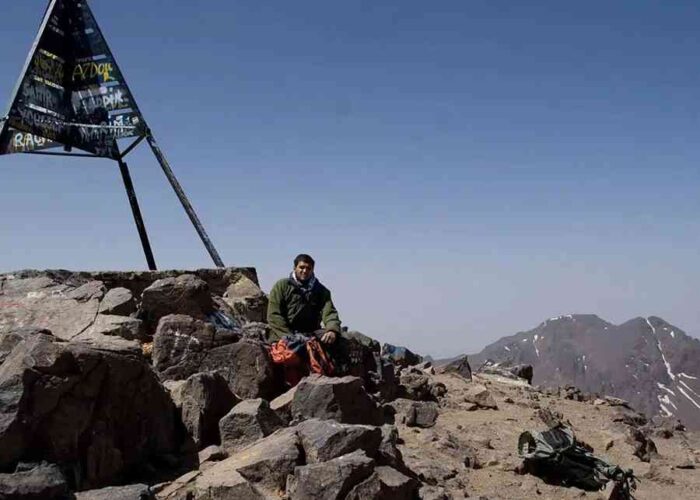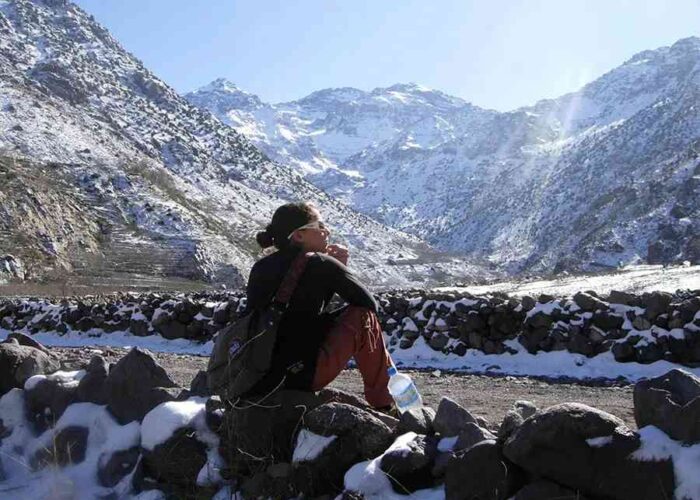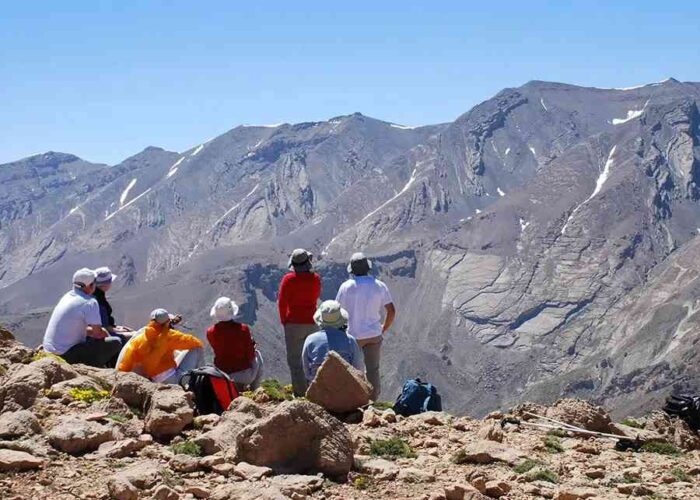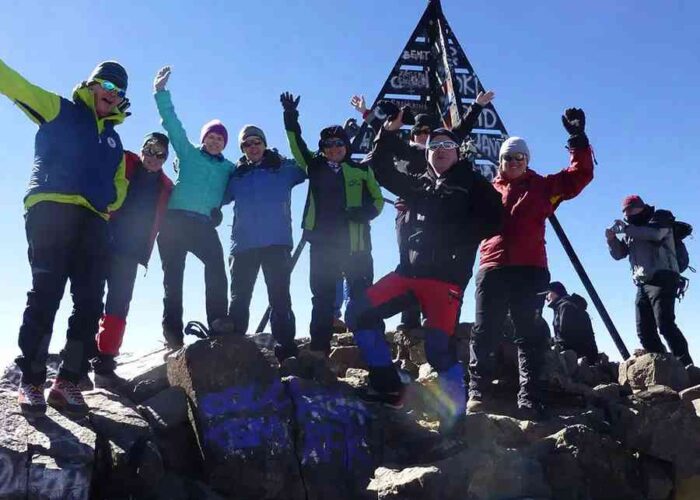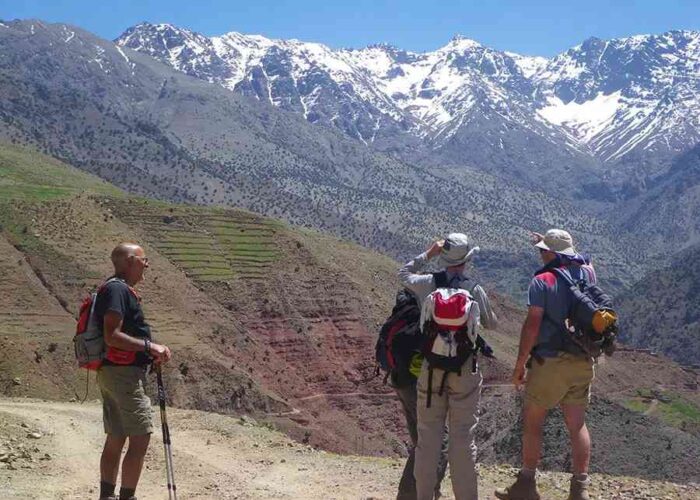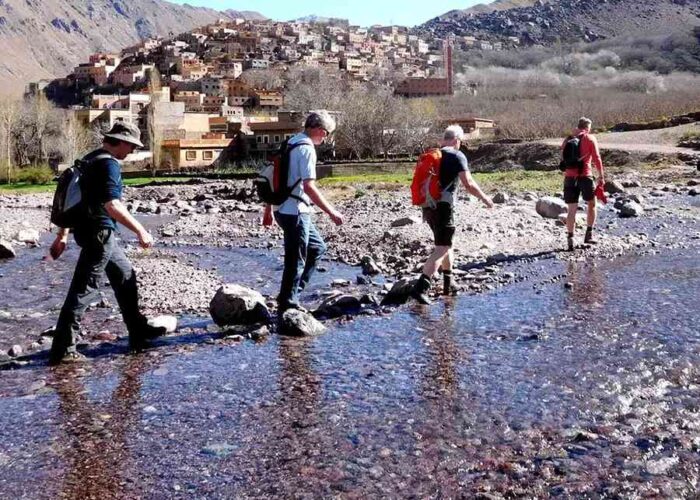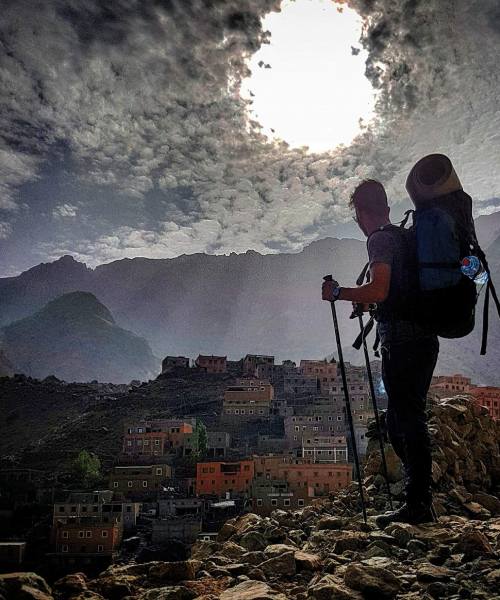
Atlas Mountains Trekking in Morocco
Welcome to the ultimate adventure with our Atlas Mountain trekking tours, where breathtaking landscapes and exhilarating experiences await. Nestled in the heart of Morocco, Trek Atlas offers a unique blend of natural beauty, cultural richness, and thrilling challenges. Whether you’re embarking on a legendary Mount Toubkal trek or exploring the scenic trails of an Atlas Mountain trek, hiking in Morocco promises an unforgettable journey through lush valleys, rugged peaks, and traditional Berber villages. Discover the allure of trekking in the Atlas Mountains with us. Let your next great adventure begin with trekking in Morocco.
Explore our Atlas Mountain tours
2 Days Mount Toubkal Ascent Trek
3-Day Mount Toubkal Ascent Trek
3 Day Atlas Mountain Trek
4 Days Mountain Toubkal Trek
Imlil To Ourika 3 Days Trekking In The Atlas Mountains
Toubkal Summit And Berber Villages Trek
Why Choose Atlas Mountain Trekking?
Trekking in the Atlas Mountains is not just about the physical challenge; it’s about immersing yourself in the unique landscapes and cultures of Morocco. The Atlas Mountains stretch like a majestic spine across the country, separating the fertile coastal plains from the vast Sahara desert. This diverse terrain makes it one of the best trekking destinations in the world.
Highlights of Trekking in the Atlas Mountains
Diverse Landscapes: The Atlas Mountains boast a variety of landscapes, from lush cedar forests to towering 4000m+ peaks. Snow-capped mountains, serene valleys, and striking Berber villages provide a constantly changing backdrop as you trek.
Rich Cultural Experiences: Our Atlas Mountain trekking trails take you through remote Berber villages, where you can interact with locals and experience their warm hospitality and humble lifestyle. The Berbers, native to the Toubkal National Park area, offer a glimpse into their centuries-old traditions and culture.
Experienced Guides: Safety and expertise are paramount in all our trekking expeditions. Our guides are highly trained and experienced, with deep knowledge of the High Atlas Mountains. Being natives of the Toubkal National Park Berber villages, they bring an authentic touch to your trekking experience.
Trekking Routes in the Atlas Mountains
Our carefully curated trekking routes cater to all levels of hikers, from easy walks to challenging multi-day treks. Here are some of the most popular routes:
Easy to Moderate Treks
- Imlil Valley Trek: A perfect introduction to Atlas Mountain trekking, this route offers stunning views and a taste of Berber culture.
- Ourika Valley Trek: Known for its beautiful waterfalls and vibrant flora, this trek is ideal for those looking for a leisurely hike.
Challenging Treks
- M’Goun Massif Trek: For experienced hikers, this trek offers a challenging climb with rewarding views of the surrounding peaks and valleys.
- Saghro Massif Trek: A rugged and remote route, perfect for those seeking solitude and adventure.
Benefits of Trekking with Us
When you choose our Atlas Mountain trekking tours, you benefit from:
Local Expertise: At Marrakech Desert Trips, our guides are locals who grew up in the Berber villages of the High Atlas Mountains. Their intimate knowledge of the area ensures you get the most authentic and safe trekking experience.
Cultural Immersion: We emphasize cultural interaction, allowing you to engage with Berber villagers, learn their language, and understand their way of life. This cultural immersion enriches your trekking experience, making it more than just a hike.
Safety and Comfort: We are a fully licensed and bonded Moroccan tour company. Your safety is our top priority, and our guides are trained to handle any situation that may arise during your trek.
Book Your Atlas Mountain Trekking Adventure Today
Ready to explore the breathtaking beauty and rich culture of the Atlas Mountains? Book your trekking adventure with us and experience the best that trekking in Morocco has to offer. Whether you’re looking for a short hike or an extended trek, we have the perfect itinerary for you. For those interested in exploring even more challenging routes, consider our dedicated page on Toubkal trekking for an unparalleled experience.
Frequently Asked Questions
What should I pack for an Atlas Mountain trek?
Pack light but include essentials such as sturdy hiking boots, weather-appropriate clothing, a hat, sunscreen, and a refillable water bottle. Don’t forget a camera to capture the stunning landscapes!
When is the best time to trek in the Atlas Mountains?
The best times for trekking are spring (April to June) and autumn (September to November) when the weather is mild and the landscapes are particularly beautiful.
Do I need to be in excellent shape to trek the Atlas Mountains?
While good physical condition is beneficial, we offer treks of varying difficulty levels. Our guides can recommend a route that matches your fitness level.
How do I get to the Atlas Mountains?
Most treks start from Marrakech, which is well-connected by international flights. From Marrakech, we arrange transportation to the starting point of your trek.
Is it safe to trek in the Atlas Mountains?
Yes, with experienced guides and proper preparation, trekking in the Atlas Mountains is safe. Our guides are trained in first aid and know the terrain well.
Can I customize my trekking itinerary?
Absolutely! We offer customizable itineraries to suit your preferences and interests. Contact us to plan your perfect trekking adventure.

